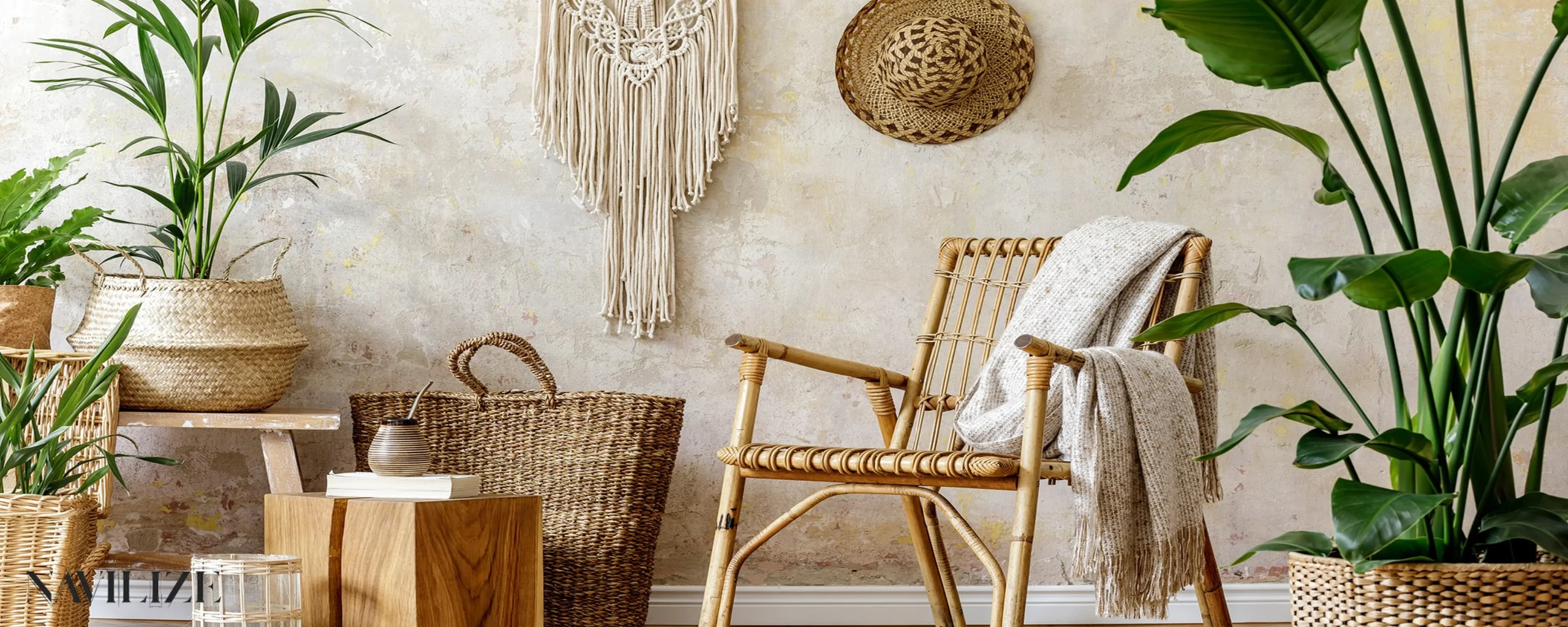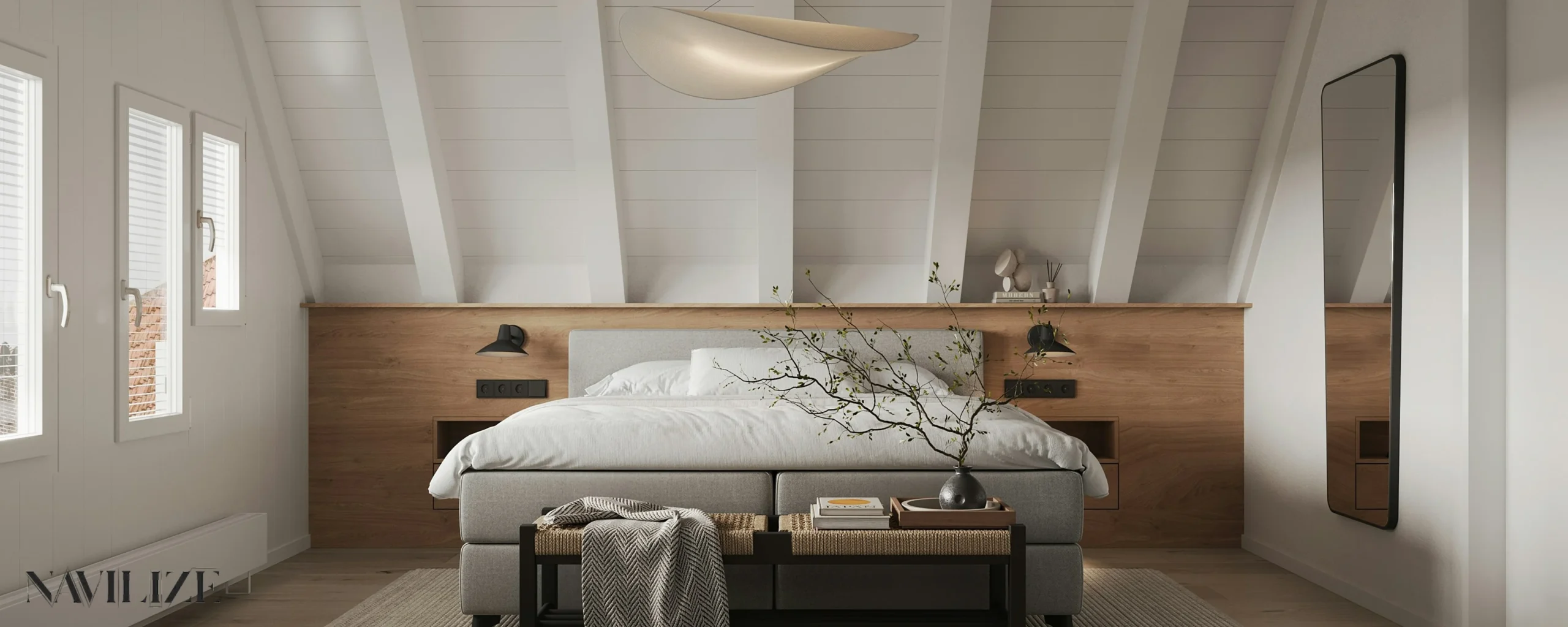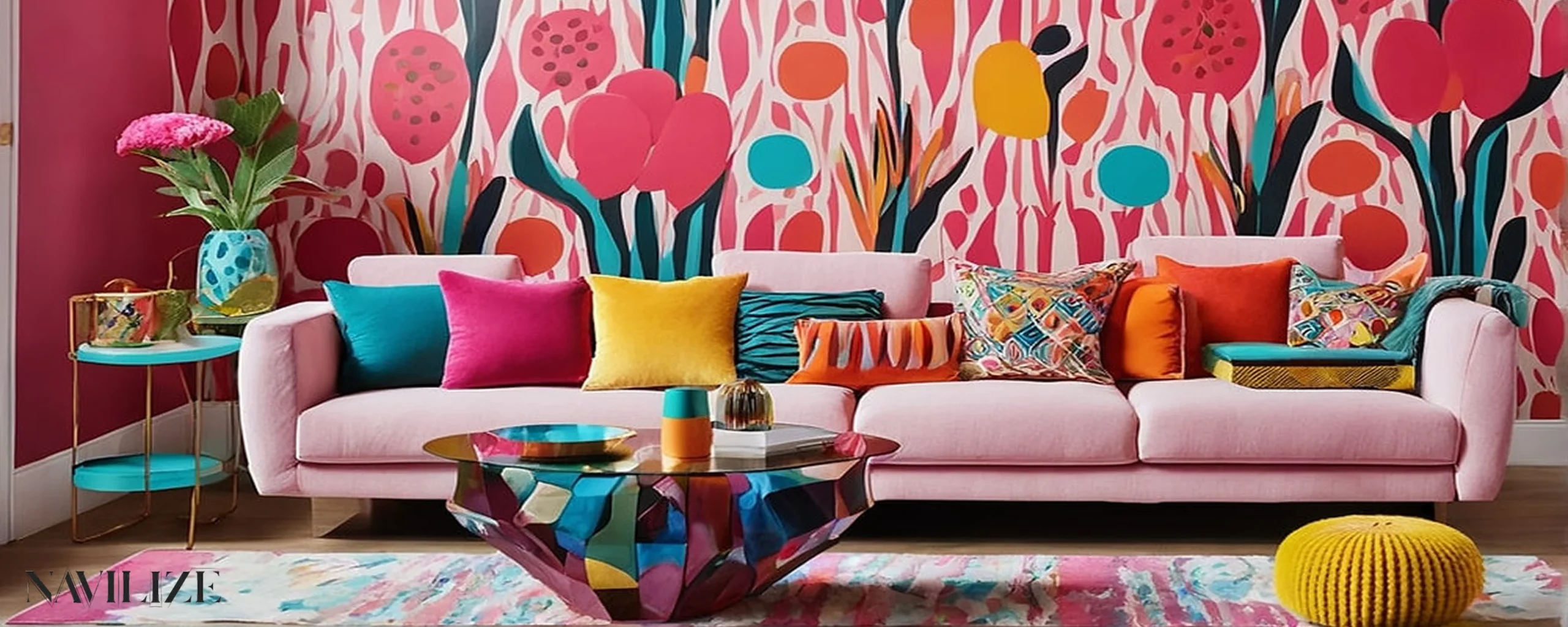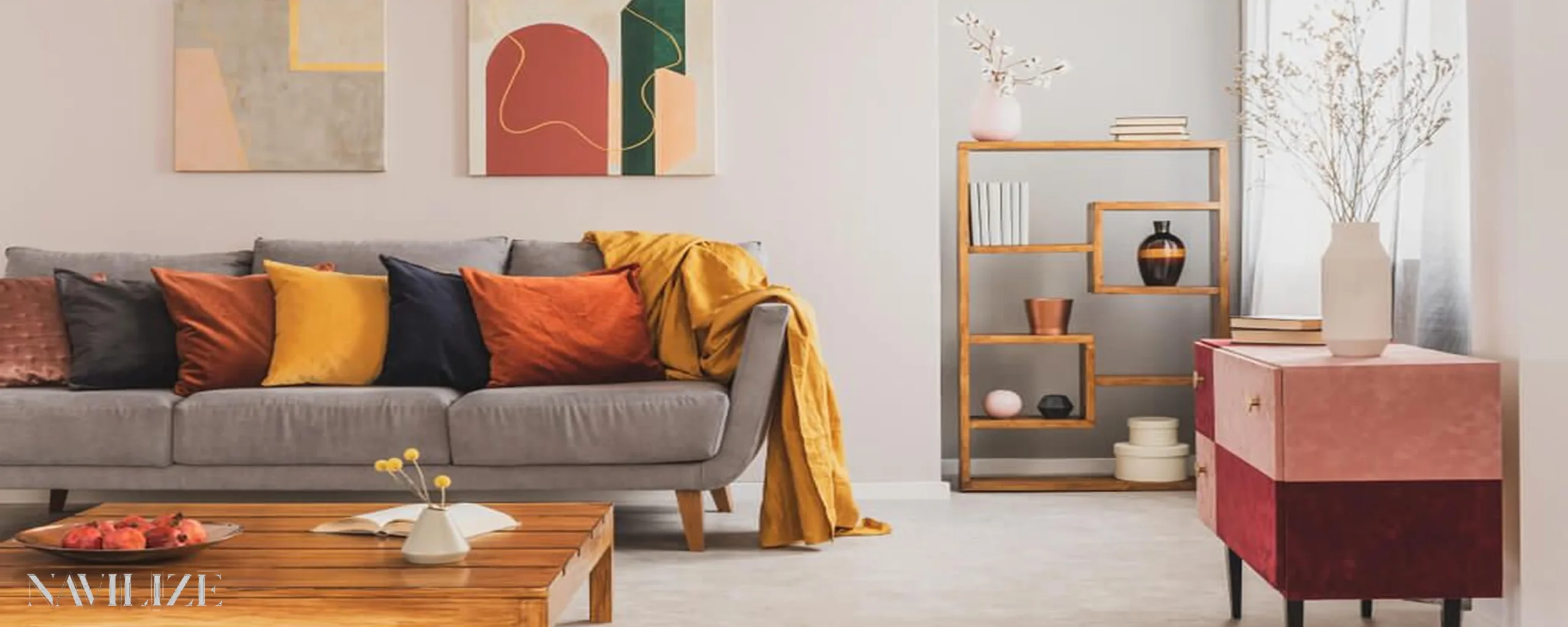Bedrooms are meant to be sanctuaries, yet outdated choices often make them feel heavy, cluttered, or uninspired. In 2025, trends in interior design are moving away from ornate décor, rigid furniture sets, and dark, bulky window treatments. The new focus is on simplicity, natural materials, and soothing color palettes that promote calm and comfort. By recognizing which styles no longer serve form or function, homeowners can refresh their bedrooms into peaceful, contemporary retreats. Retiring these fading trends creates spaces that feel airy, balanced, and truly restorative.”
Why It’s Time to Ditch These Fading Bedroom Trends
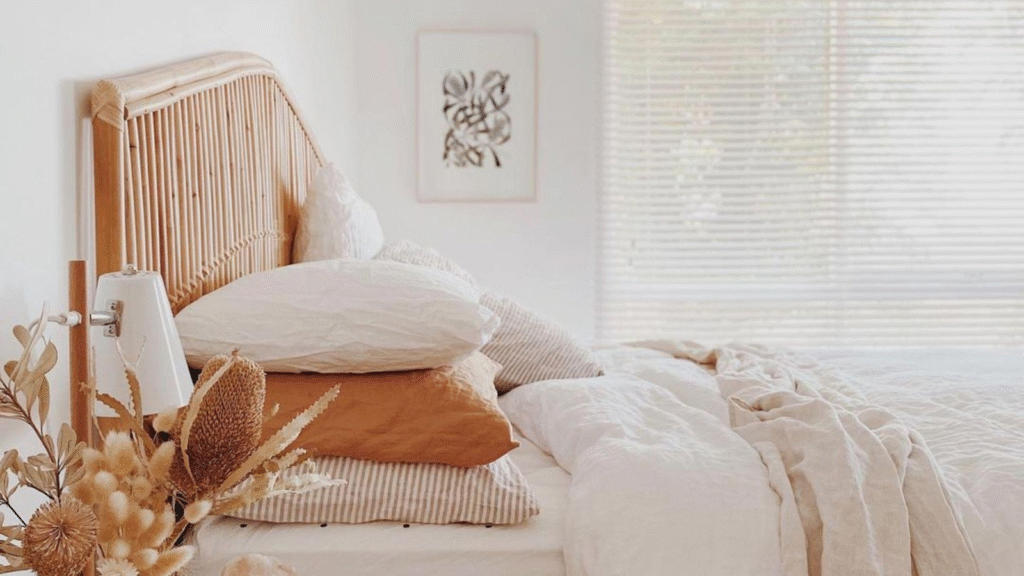
source: realhomes.com
Trends that once seemed luxurious now feel outdated or visually overwhelming. Today’s designers emphasize that a bedroom should encourage rest and relaxation, something excessive ornamentation or strict uniformity can easily disrupt. Bulky headboards, heavy curtains, and repetitive patterns dominate the space and add tension rather than comfort. Updating these features restores balance, proportion, and light. Experts recommend starting with foundational elements like furniture, color, and layout to build a cohesive transformation. Letting go of these old habits allows your space to feel timeless, functional, and effortlessly beautiful.
The Shift Toward Modern Serenity
Modern bedrooms embrace calm, uncluttered design with muted colors and organic textures. Designers now favor natural materials such as linen, oak, and cotton to foster tranquility. Clean lines and minimal décor help the room breathe while maintaining warmth and character. Lighting also plays a key role, layered ambient and task lighting enhance comfort and versatility. Removing unnecessary ornamentation promotes mindfulness and relaxation. The goal is not stark minimalism but rather a space where simplicity, texture, and personal touches come together to create a serene and inviting retreat.
Pro Insights for Timeless Updates
Interior experts recommend focusing on investment pieces that endure both stylistically and functionally. Replacing bulky elements with streamlined alternatives keeps bedrooms feeling fresh over time. Strategically layering textiles adds depth without clutter. Incorporating subtle patterns and tonal variations adds interest while maintaining calm. Functionality should guide the selection of furniture, lighting, and storage. Combining classic pieces with modern accents creates lasting appeal and allows bedrooms to evolve naturally with personal style.
1. Overly Ornate Headboards: Bulky Relics of the Past
Excessively ornate headboards can overwhelm a bedroom, making it appear heavy and dated. Designers recommend replacing intricate carvings with streamlined, textured, or upholstered options that add comfort without dominating the room. Simplified designs encourage visual flow and allow other accents to shine. High-quality materials, subtle details, and proportionate scale can maintain luxury while avoiding visual clutter. Retiring overly ornate headboards promotes a modern, relaxed, and adaptable bedroom aesthetic.
Why Retire It

source: housebeautiful.com
Ornate headboards often date quickly and require maintenance. Dust collects in intricate carvings, and bold designs can dominate the visual hierarchy of the room. Simplifying headboards reduces visual weight, improves lighting reflection, and allows the room’s architecture or artwork to take center stage. Removing these bulky pieces achieves a cleaner, contemporary appearance, supporting serenity and function.
Fresh Alternatives
Streamlined upholstered panels, floating wooden frames, or textured minimalist headboards provide modern solutions. Neutral tones or subtle patterns harmonize with bedding and accessories. Adjustable or modular designs add flexibility for small or large rooms. Integrated storage or lighting enhances functionality without clutter. Pairing understated headboards with layered textiles or accent walls maintains visual interest without overwhelming the bedroom.
2. Matchy-Matchy Bedding Sets: Bland Uniformity
Rigidly matching bedding can make a bedroom feel sterile and lifeless. Designers encourage mixing patterns, textures, and tonal variations to add depth, comfort, and personality. Coordinating colors rather than strictly matching motifs allows creativity while maintaining cohesion. Layered throws, cushions, and sheets break monotony and enhance tactile experience, transforming the bed into a dynamic focal point. Avoiding uniformity ensures the bedroom feels lived-in and inviting.
The Problem with Perfection
Overly coordinated bedding emphasizes symmetry over comfort, creating an artificial aesthetic. Perfectly matched sets can appear mass-produced and lack individuality. This rigidity restricts flexibility for styling, seasonal updates, or personal accents. Retiring matchy-matchy sets supports a more human-centered, adaptable, and visually engaging environment.
Layered Mix-and-Match Hacks

source: decorilla.com
Start with a neutral base sheet or duvet, then layer contrasting textures and colors using throws, cushions, and blankets. Introduce subtle patterns in small accents to tie the palette together. Alternate solids with prints for depth. Mixing fabric types such as linen, velvet, and cotton enhances tactile appeal. Seasonal rotation refreshes the look and prevents stagnation, keeping the bedroom stylish, approachable, and evolving with trends.
3. Heavy Drapery Curtains: Dark and Dated Blockers
Thick, heavy drapery can block natural light, making bedrooms feel dark, oppressive, and outdated. Designers increasingly replace cumbersome curtains with lighter fabrics that allow airflow while maintaining privacy. Heavy drapes exaggerate the room’s scale and overpower furniture or décor. Updating to lighter treatments refreshes the space, balancing aesthetics and function while supporting modern serenity.
Light-Stealing Culprits
Heavy velvet or layered drapery reduces natural daylight, diminishing ambiance and energy. Excessive opacity prevents interplay of light and shadow, reducing visibility of textures in walls, bedding, and accessories. It can also interfere with ventilation and HVAC efficiency. Identifying these culprits helps homeowners restore brightness and balance.
Breezy Sheer Replacements
Sheer curtains or semi-transparent panels provide coverage while enhancing natural light. Linen, cotton blends, or voile fabrics allow sunlight to illuminate textures and colors. Designers often layer sheers with minimalistic blackout panels for versatility without bulk. Light, flowing curtains add movement and visual softness, complementing modern décor and creating airy, comfortable bedrooms aligned with contemporary design trends.
4. Tufted Everything: Faux-Luxe Overkill

source: housedigest.com
Tufted furniture and headboards dominated past design trends, but excessive tufting now appears overdone and artificial. Blanket tufted styles such as beds, chairs, and ottomans can make a room look visually busy and less sophisticated. While tufting adds texture, it often clashes with minimalist or modern décor and is difficult to clean. Replacing over-tufted pieces with sleek, textured alternatives reduces visual clutter while maintaining comfort. Neutral colors, clean lines, and subtle textures produce a balanced, contemporary look. Retiring overused tufting ensures a stylish, versatile, and functional bedroom without heavy detailing.
Maintenance Nightmares
Tufted furniture collects dust, requires careful cleaning, and may show wear faster due to stitching tension. Deep buttoned surfaces can trap allergens and complicate upkeep. Reducing tufting simplifies maintenance, improves hygiene, and minimizes visual bulk. Choosing smoother or practical upholstery balances luxury and usability while preserving a contemporary aesthetic.
Sleek Textured Swaps
Sleek upholstered panels, subtle stitched detailing, or patterned fabrics replace heavy tufting while maintaining visual interest. Designers incorporate linear stitching, woven textures, or smooth leather finishes for elegance. This preserves comfort and tactility while creating clean, modern lines. These swaps integrate easily with patterned cushions, throws, and rugs without competing for attention, promoting a calming, sophisticated bedroom environment.
5. Canopy Beds: Romantic but Cramped
Canopy beds once epitomized romance and grandeur, yet in contemporary bedrooms, they can dominate space and restrict movement. In smaller rooms, heavy frames or draped canopies make areas feel cramped and cluttered. Canopy beds often conflict with minimalist or modern design principles. Updating to open-air bed frames preserves elegance without overwhelming proportions. Lightweight, floating, or low-profile frames create visual openness while maintaining comfort.
Space-Wasting Drama
Bulky canopy frames consume ceiling height and reduce functional space around the bed. Draped fabric can trap dust and block light, and ornate designs may clash with modern accessories. Excessive drama undermines serenity. Space-efficient alternatives retain style without dominating the room, optimizing circulation and visual balance. Removing overbearing canopies improves aesthetics and usability.
Open-Air Floating Frames

source: homary.com
Modern beds with floating or low-profile frames provide elegance without visual weight. Minimalist headboards, cantilevered platforms, or integrated storage enhance functionality. Light finishes and simple lines make the room appear larger and brighter. Combining subtle textures with clean frames creates sophistication. Open-air frames accommodate layered bedding and cushions while supporting a modern, airy atmosphere. This approach merges style with practicality, avoiding confinement while maintaining a bedroom sanctuary.
6. Floral Overload Wallpapers: Grandmother’s Garden Vibes
Excessive floral wallpaper can make bedrooms feel outdated and busy. Dense, patterned walls often clash with furniture, bedding, or modern décor. While florals can add charm, overuse creates visual noise, distracting from comfort and relaxation. Replacing overpowering designs with subtle geometric or abstract murals balances interest with serenity. Lighter tones and scaled patterns refresh walls without dominating the space. Retiring floral overload ensures a bedroom that feels modern, cohesive, and visually calming.
Clashing Chaos
Large-scale floral designs compete with patterns in bedding, rugs, or curtains. The visual overload diminishes a restful atmosphere. Walls should complement furniture and accessories, not compete. Dense florals can visually shrink a room, making small spaces appear even more confined. Removing or minimizing heavy floral patterns restores balance, enhances spatial perception, and provides a flexible backdrop for layered décor.
Subtle Geometric Murals

source: etsy.com
Replacing floral overload with subtle geometric murals or scaled patterns adds contemporary interest without overwhelming the room. Neutral backgrounds with minimal shapes maintain calm while adding visual texture. Coordinating wall patterns with bedding and furniture enhances harmony. Smaller-scale, repeated geometric motifs add depth without clutter. This approach allows personalization, seasonal updates, and creative layering while preserving serenity and modern style, keeping bedrooms airy, bright, and stylish.
7. Brass Accents Everywhere: Tarnished Trends
While brass was once celebrated for warmth and luxury, overusing it in fixtures, handles, or lighting now feels dated. Designers recommend reducing brass dominance and replacing it with matte black, brushed metal, or warm wood tones for a timeless look. Brass patinas quickly, showing wear and aging unevenly. Excessive shine can distract from architectural details or layered décor. Updating hardware and accents modernizes bedrooms while maintaining sophistication. Balancing metallic tones with neutral finishes, soft textures, and natural materials creates depth and elegance. Retiring ubiquitous brass ensures contemporary, versatile, and enduring bedroom design.
Quick-Fade Fixtures
Brass fixtures and knobs can tarnish or fade unevenly, creating inconsistent aesthetics. Polished metals demand ongoing maintenance and may clash with newer décor. Exposure to light, humidity, and daily use accelerates wear. Updating to matte black, aged bronze, or wood finishes preserves visual consistency and reduces upkeep. Choosing durable, timeless materials ensures accent elements remain stylish while complementing modern interiors without overpowering other design features.
Matte Black or Wood Tones
Matte black or warm wood accents provide contemporary sophistication while harmonizing with diverse color palettes. These finishes pair seamlessly with neutral walls, textiles, and furniture. They offer flexibility in integrating layered textures, patterned bedding, or subtle décor without visual competition. Wood tones add warmth, while matte black offers contrast and modernity. Transitioning from brass to these alternatives refreshes bedrooms, delivering a sleek, stylish, and timeless aesthetic suitable for evolving 2025 design trends.
8. Under-Bed Storage Boxes: Clutter Traps
Under-bed storage boxes, though practical, often accumulate dust, create clutter, and disrupt bedroom flow. Visible boxes diminish serenity and can make the space feel disorganized. Alternative storage solutions such as built-in drawers, vertical shelving, or minimalist baskets optimize organization without crowding. Integrated solutions keep the room tidy while maintaining aesthetic appeal. Thoughtful storage allows flexibility for seasonal items or extra bedding while preserving open floor space. Retiring visible under-bed clutter enhances visual simplicity, making bedrooms feel larger, cleaner, and aligned with modern, tranquil design principles.
Dust-Magnet Drawers
Boxes beneath beds collect dust and require frequent maintenance. Cluttered under-bed storage detracts from clean, serene bedroom aesthetics. Accessibility is often compromised, and stacked containers can reduce airflow or make cleaning difficult. Visible boxes can clash with modern décor, drawing attention to functional rather than aesthetic elements. Minimizing under-bed clutter makes bedrooms feel fresher, brighter, and more harmonious.
Built-In Vertical Solutions

source: haydenhill.co
Vertical storage alternatives, including built-in shelving, closets, or modular cabinets, provide practical organization without consuming floor space. Designers suggest utilizing walls and headboard-integrated storage to keep items accessible yet hidden. Modular designs adapt to seasonal needs and maintain clean lines, preserving serenity. These solutions improve flow, light distribution, and visual balance, ensuring bedrooms remain functional, tidy, and contemporary while avoiding clutter traps associated with traditional under-bed boxes.
Ready to Refresh Your Bedroom Sanctuary? Evolve with Navilize!
Bedrooms should feel peaceful, inviting, and visually cohesive, not weighed down by outdated trends. Retiring heavy, ornate elements such as bulky headboards, excessive tufting, floral overload, or cluttered storage allows spaces to breathe. Designers at Navilize advocate for modern serenity, subtle textures, and functional layering that balances comfort and style. Thoughtful updates, from window treatments to bedding and lighting, transform the room into a harmonious retreat. By incorporating contemporary materials, proportional furnishings, and refined details, homeowners can achieve a bedroom that is timeless, airy, and tailored to personal taste, reflecting 2025 design sensibilities while enhancing daily relaxation and wellbeing.

